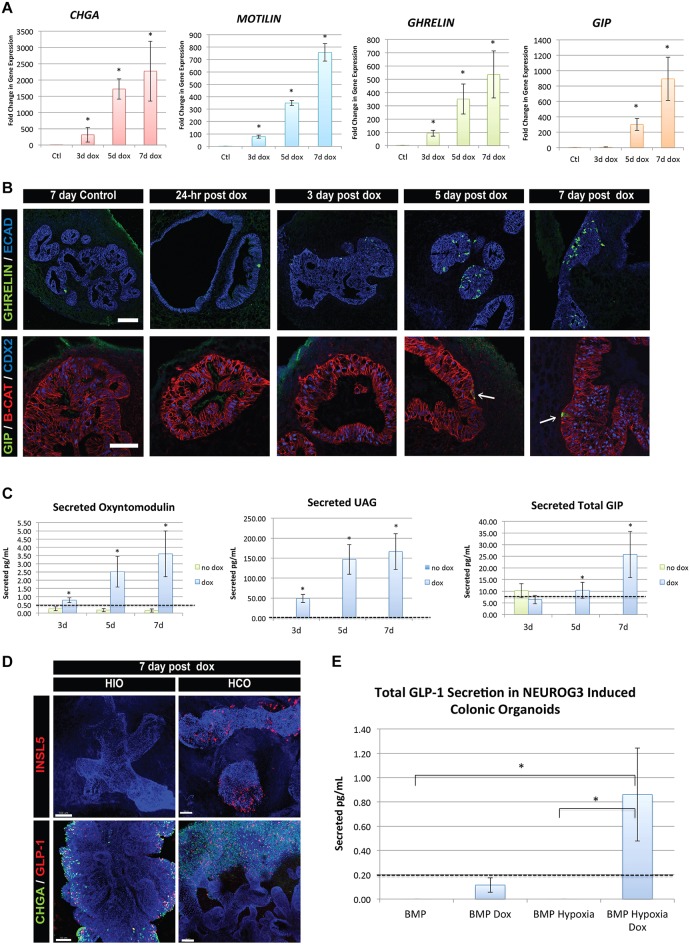Fig. 4.
EEC hormone subtypes display individualized timing for differentiation, maturation and hormone secretion. (A) qPCR data for the endocrine marker CHGA and EEC hormones motilin, ghrelin and GIP. Whereas ghrelin and motilin were significantly upregulated 3 days after a doxycycline pulse, GIP only began to be expressed at the 5-day time point. This is indicative of differential timing of maturation and subtype differentiation in EECs. Transcripts were normalized to control, uninduced HIO samples (n=3 for each time point). (B) Immunofluorescence for X/A and K cells as marked by the hormones ghrelin and GIP, respectively. As time after doxycycline increases, the number of ghrelin+ cells increases. However, GIP+ cells remain rare in the HIO epithelium even at 7 days (arrows). (C) The timing of secretion of hormones from EECs followed a similar trend, in which increased ghrelin and oxyntomodulin secretion can be detected in cultures at 3 days after doxycycline, whereas GIP is only increased at 7 days (n=6). (D) Expression of NEUROG3 in HCOs induced formation of distal EEC subtypes that express INSL5 and GLP-1 as shown by whole-mount immunofluorescence. DAPI (white) is used to stain all nuclei. (E) NEUROG3-induced HCOs secrete GLP-1 hormone when generated under optimized growth conditions that include 3 days of hypoxic growth on days 6-9 (n=3). Values in graphs represent mean±s.e.m. *P<0.05 (Student's t-test). Dashed lines represent detection limits for ELISA assays. iPSC lines were used for secretion studies. Scale bars: 50 μm (B); 100 μm (D). See also Figs S3 and S4.

